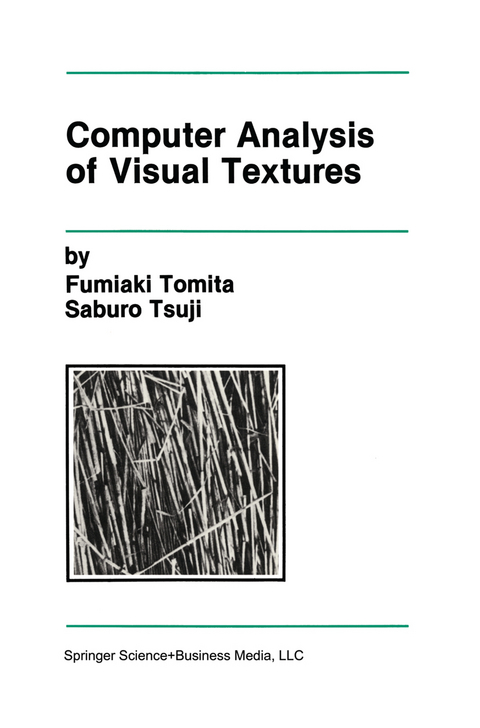
Computer Analysis of Visual Textures
Seiten
1990
Springer (Verlag)
978-0-7923-9114-2 (ISBN)
Springer (Verlag)
978-0-7923-9114-2 (ISBN)
This book presents theories and techniques for perception of textures by computer. Texture analysis is one of the first important steps in computer vision since texture provides important cues to recognize real-world objects.
This book presents theories and techniques for perception of textures by computer. Texture is a homogeneous visual pattern that we perceive in surfaces of objects such as textiles, tree barks or stones. Texture analysis is one of the first important steps in computer vision since texture provides important cues to recognize real-world objects. A major part of the book is devoted to two-dimensional analysis of texture patterns by extracting statistical and structural features. It also deals with the shape-from-texture problem which addresses recovery of the three-dimensional surface shapes based on the geometry of projection of the surface texture to the image plane. Perception is still largely mysterious. Realizing a computer vision system that can work in the real world requires more research and ex periment. Capability of textural perception is a key component. We hope this book will contribute to the advancement of computer vision toward robust, useful systems. vVe would like to express our appreciation to Professor Takeo Kanade at Carnegie Mellon University for his encouragement and help in writing this book; to the members of Computer Vision Section at Electrotechni cal Laboratory for providing an excellent research environment; and to Carl W. Harris at Kluwer Academic Publishers for his help in preparing the manuscript.
This book presents theories and techniques for perception of textures by computer. Texture is a homogeneous visual pattern that we perceive in surfaces of objects such as textiles, tree barks or stones. Texture analysis is one of the first important steps in computer vision since texture provides important cues to recognize real-world objects. A major part of the book is devoted to two-dimensional analysis of texture patterns by extracting statistical and structural features. It also deals with the shape-from-texture problem which addresses recovery of the three-dimensional surface shapes based on the geometry of projection of the surface texture to the image plane. Perception is still largely mysterious. Realizing a computer vision system that can work in the real world requires more research and ex periment. Capability of textural perception is a key component. We hope this book will contribute to the advancement of computer vision toward robust, useful systems. vVe would like to express our appreciation to Professor Takeo Kanade at Carnegie Mellon University for his encouragement and help in writing this book; to the members of Computer Vision Section at Electrotechni cal Laboratory for providing an excellent research environment; and to Carl W. Harris at Kluwer Academic Publishers for his help in preparing the manuscript.
Statistical Texture Analysis.- Image Segmentation.- Shape Analysis.- Structural Texture Analysis.- Grouping.- System and Evaluation.- Object Recognition.- Shape from Texture.
| Erscheint lt. Verlag | 31.8.1990 |
|---|---|
| Reihe/Serie | The Springer International Series in Engineering and Computer Science ; 102 |
| Zusatzinfo | XII, 173 p. |
| Verlagsort | Dordrecht |
| Sprache | englisch |
| Maße | 156 x 234 mm |
| Themenwelt | Informatik ► Grafik / Design ► Digitale Bildverarbeitung |
| Informatik ► Theorie / Studium ► Künstliche Intelligenz / Robotik | |
| ISBN-10 | 0-7923-9114-4 / 0792391144 |
| ISBN-13 | 978-0-7923-9114-2 / 9780792391142 |
| Zustand | Neuware |
| Haben Sie eine Frage zum Produkt? |
Mehr entdecken
aus dem Bereich
aus dem Bereich
Modelle für 3D-Druck und CNC entwerfen
Buch | Softcover (2022)
dpunkt (Verlag)
CHF 48,85
alles zum Drucken, Scannen, Modellieren
Buch | Softcover (2024)
Markt + Technik Verlag
CHF 34,90


